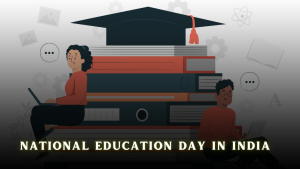Font size:
Print
Academic Freedom at Risk: The Urgent Challenges Facing Global Campuses
Academic Freedom in Crisis: Unmasking the Hidden Pressures in Universities
Context:
Academic freedom is increasingly debated across the world, especially in democracies where educational institutions are caught in ideological and political crosscurrents. In light of recent developments in the United States, where former President Donald Trump’s actions have targeted Ivy League institutions, this issue has gained renewed prominence. The question arises: Is academic freedom a real and essential concept, or merely an idealistic notion under constant threat?
Meaning and Historical Roots of Academic Freedom
The Democratic Context: Checks and Balances
- Academic freedom operates within democratic checks and balances:
- Judiciary, elections, media freedom play a role in safeguarding university autonomy.
- However, freedom is contingent upon political will and public perception.
- Education is seen as a tool to shape minds and moral compass, as seen in Satyajit Ray’s “Hirak Rajar Deshe”.
- The film depicts state control over education as a tool for indoctrination.
- Education is seen as a tool to shape minds and moral compass, as seen in Satyajit Ray’s “Hirak Rajar Deshe”.
- Academic freedom refers to the right of scholars to research, teach, publish, and speak freely, without fear of institutional or political censorship.
- It finds roots in:
- The Humboldtian model of higher education (Wilhelm von Humboldt, 19th century Germany), which institutionalised:
- Freedom of scientific inquiry
- Unity of research and teaching
- The Humboldtian model of higher education (Wilhelm von Humboldt, 19th century Germany), which institutionalised:
- Defined formally at global platforms:
- 1950 UNESCO International Conference (Nice): “Right to pursue knowledge for its own sake and follow truth wherever it may lead.”
- 2005 Columbia Global Colloquium: Freedom from interference or penalty “subject to norms of scholarly inquiry.”
Why Academic Freedom is Essential
- Truth-seeking mandate: As per Yale Law School professor Keith E. Whittington (2022), truth-seeking and dissemination require robust protections for scholars.
- It is foundational to:
- Critical thinking
- Societal progress
- Democracy and dissent
- Ancient Indian examples: Nalanda and Taxila, supported by monarchs, welcomed scholars from across the world, reflecting freedom from dogma.
Key Challenges to Academic Freedom
- Limitations and Misconceptions
-
-
- Academic freedom is not absolute.
- Distinction from general freedom of speech:
- An academic must follow peer-reviewed standards and evidence-based reasoning.
- E.g., a geology professor claiming the Earth is flat is not practicing academic freedom but violating academic duty.
- Credentials matter: Non-academics can voice opinions publicly, but academic freedom is bounded by professional norms and discipline.
-
- Political Interference: A Constant Challenge
-
-
- Examples from history:
- Medieval Europe: Scholars challenging church theology were persecuted.
- Soviet Union (1930s): Disciplines like sociology and genetics labelled as “bourgeois pseudoscience” and banned.
- Contemporary United States:
- Columbia University retreated under pressure.
- Harvard University opted for legal defence of academic freedom.
- Universities can be seen as threats by authoritarian regimes, as they often nurture dissent and independent thinking.
- Examples from history:
-
- The ‘Publish or Perish’ Culture: A Structural Threat
-
-
- Modern academia is shaped by metrics:
- Tenure, promotions, research funding, pay hikes are all linked to publication count.
- This creates peer pressure to publish, often at the cost of depth and originality.
- Example: Peter Higgs, Nobel laureate in Physics (2013), stated he would not survive in today’s academia due to lack of constant publishing.
- He admitted he would be considered unproductive by modern standards.
- Universities focus on international rankings, which further exacerbate this trend.
- Modern academia is shaped by metrics:
-
- Curriculum Rigidity and Bureaucratic Constraints
-
-
- Limited leeway for unorthodox or exploratory approaches within predefined syllabi.
- This rigidity undermines intellectual curiosity and creative academic engagement.
- Administrative and structural issues often leave little room for academic experimentation or alternative discourse.
-
- Institutional Dependencies and Financial Pressures
-
- Dependence on government grants, private donations, and corporate funding creates conflicts of interest.
- Research themes may be aligned more with funders’ interests than with independent inquiry.
- Academic freedom becomes a bargaining chip in the politics of funding.

